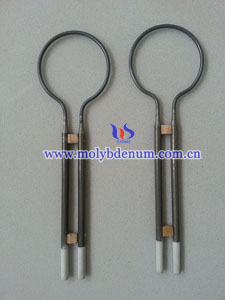Molybdenum Disilicide Manufacturing Methods
Molybdenum disilicide manufacturing methods includes mechanical alloying (MA), low vacuum plasma spraying (LVPD), reaction synthesis, solid-state displacement reaction and XDTM technology (Exothermic Disperasion technique) and so on.

Mechanical alloying is through mechanical-chemical action making pure elements after high energy ball milling to synthetise new materials, which is process of raw material powder particle constantly cracking and continuously welding. There has two formation mechanism of MoSi2 by using MA technology. Self-propagating synthesis mechanism, Mo and Si powders mixed with the stoichiometric ratio, the MoSi2 formed at the high temperature and the reaction is fast. Non-stoichiometric mixed Mo and Si powders, the reaction process is longer and the MoSi2 formed by mechanical alloying mechanism diffusion-controlled reaction (MDR).
Low vacuum plasma deposition in low vacuum environment and high speed makes inert gas (argon or neon gas) to form plasma and melts the spray material powder with the plasma jet deposited on the substrate to form small grain and chemical homogeneity, unbalance strong solubility material. Using LVPD to synthesize MoSi2 the density can reach 95 to 98% and the hardness and fracture toughness are greatly improved.
Synthesis reaction includes SHS and in situ reaction sintering method. SHS method to synthesize MoSi2 is making used of Mo-Si heating, so the temperature gradually increased to cause new chemical reaction and the reaction will throughout the whole reactant, so the synthesis reaction system will spontaneous complete. In situ reaction sintering method is heating a certain chemical mixing ratio Mo and Si powders to a certain temperature to obtain thermodynamically stable compounds and to complete the process of sintering technology.
Solid-state displacement reaction which is diffusion phase transformation reaction, it usually used in the ceramic composites and intermetallic matrix, but the disadvantage is slow response, high costs, which greatly limits its application.
MoSi2 matrix composites produced by XDTM exposed to air 450 ℃ ~ 550 ℃ for 48 hours didn't show PEST phenomenon.
If you have got any interest in molybdenum metals, please feel free to contact us by email: sales@chinatungsten.com, sales@xiamentungsten.com or by telephone:86 592 512 9696/86 592 512 9595.
Related Links: Molybdenum News & Prices
